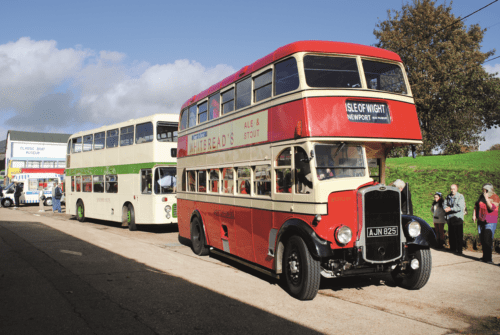
What is heritage, asks Jonathan Welch, why is it important, and what makes it relevant to the industry today?
As you will have read in last week’s issue, a new project headed by the National Association of Road Transport Museums (NARTM) to ‘grade’ or classify all of the nation’s preserved buses. When I first heard about it, I thought ‘why?’, and I’m sure I’m not the only one. But it makes sense.
I’ve heard some people say that heritage has no place in a magazine like CBW, which is aimed at the industry today, at managers, directors, operational staff, drivers, and everyone else who keeps the wheels turning. And it’s true, that’s a large part of our audience. But many of those have an interest in (some might even admit to a passion for) the wider industry, and that includes its past. How many companies have heritage vehicles in their fleet, for example, and how many staff own a preserved bus or two?
Quite a few, in fact; some more well-known than others. I drive them myself occasionally and see the effect they have on ordinary, ‘non-bus’ people. But it’s more than just about the vehicles. It’s about the other things too, the people, the places, the events, the pride. Buses play a huge part in people’s lives, and sometimes, it’s easy to overlook that in favour of the here and now. The immediate. The present. We shouldn’t forget that the industry that CBW is recording today, that will become tomorrow’s heritage.
There’s something else about buses too, and that’s how tactile they are. They’re the perfect interactive exhibit. Go to any classic vehicle event, and you can guarantee that while everyone will admire the cars and trucks, they will want to get on the buses. Relive memories of their youth, the feel, the smell. I’ve heard so many people mention the smell, and how it takes them back to memories of their youth. It’s a great PR moment for the industry as a whole.
But what does that have to do with the question, and why does it make sense for NARTM’s ‘Bus Inspectors’ to undertake what might be an expensive and laborious exercise to grade the nation’s buses?
A recent visit to the Museum of Transport in Greater Manchester (look out for more on that in a future issue!) highlighted something to me that’s easy to overlook. Two things, in fact. Space, and technology.

By subscribing you will benefit from:
- Operator & Supplier Profiles
- Face-to-Face Interviews
- Lastest News
- Test Drives and Reviews
- Legal Updates
- Route Focus
- Industry Insider Opinions
- Passenger Perspective
- Vehicle Launches
- and much more!


